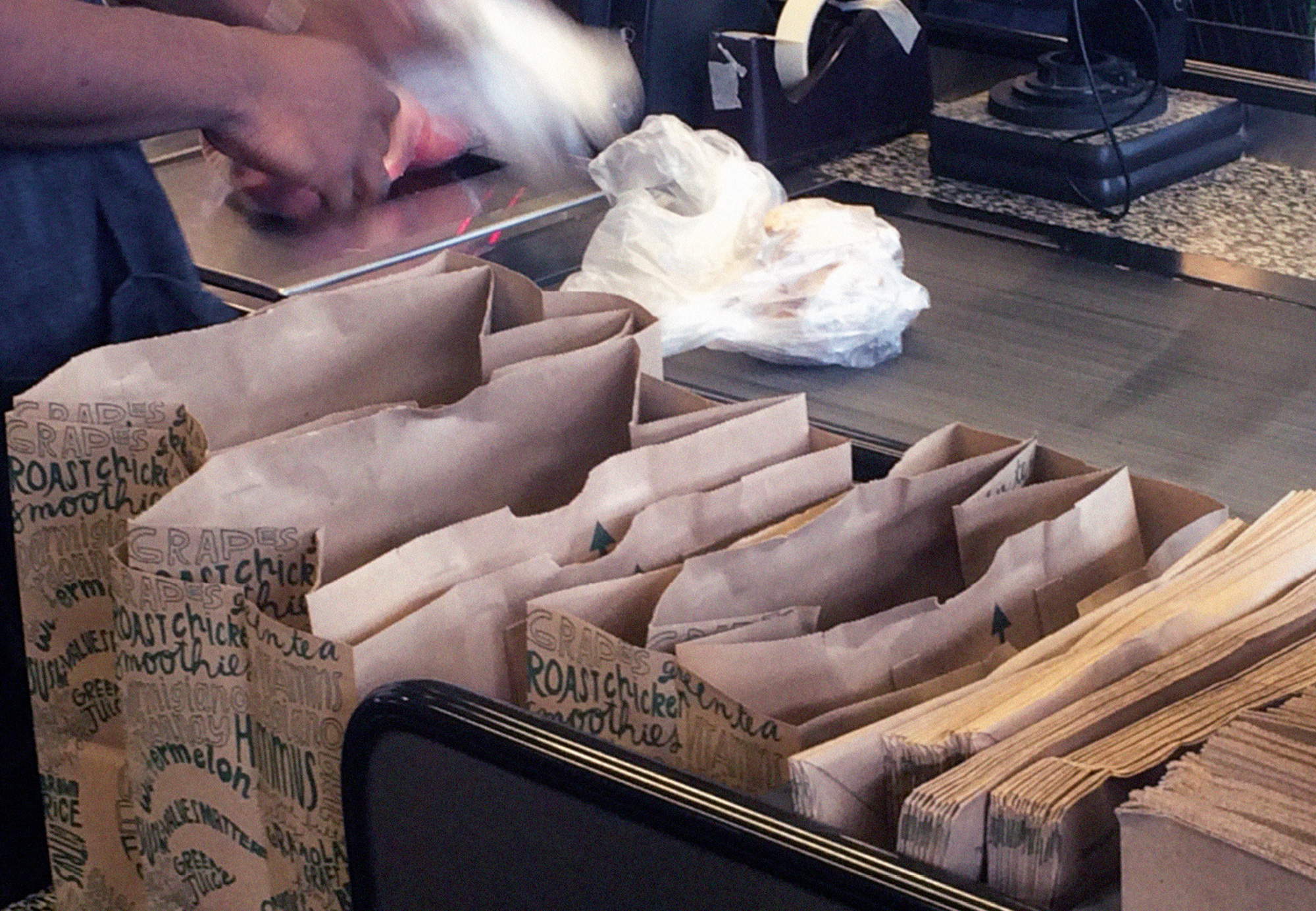Being Double
A bag in a bag in a bag
Michael Marder

Anyone visiting the United States is immediately struck by the way everything is, almost obsessively, double-packaged there. From disposable tea or coffee cups to grocery bags, you leave cafés and supermarkets with a not-so-symbolic excess in your hands. It is, of course, possible to cite pragmatic reasons for such a practice: doubling the paper cups allows you to not get burned by a hot beverage; putting one bag inside another prevents them from tearing open, and so forth. But even such explanations betray something other than matters of mere “convenience.” In a culture of obsolescence—that is, of goods always already produced and, especially, consumed as waste or garbage—things no longer work as they should. To fulfill their functions properly, they must rely on reinforcements provided by other things, often of the same kind. Taken in isolation, a paper cup fails to insulate and a plastic bag disintegrates, which is why another equally shoddy product is added to support them.
I am acutely aware of a certain degree of silent complicity between the industrial generation of consumable trash and consumers’ own refusal to commit to reusable objects that would cut down on the wastefulness of their (our) lifestyle. (This, too, is gradually changing, at least when it comes to shopping bags. Recall that in fall 2014 California became the first state in the United States to pass a law banning “single-use plastic bags.” The law is still not in effect, however; a proposal to reverse it will be put to a referendum during the November elections.) But what if still-deeper philosophical issues concerning the constitution of reality lurk behind the mundane phenomenon of double packaging?
For one, nothing and nobody exists in isolation from others. In the world around us, things are inevitably articulated with other things in space, rendering absolute objective, as much as subjective, autonomy illusory. Double-bagging and, similarly, double-cupping bring into sharper relief this interdependence of things, but they do so in a very peculiar manner. What these practices join together are two objects of the same kind, which is a telltale sign of the homogenization of our world. The same articulated with the same—that is the model of the real, of communication, and, indeed, of thinking increasingly foisted upon us in the age of globalization. From an ecological standpoint, all these articulations are inherently wasteful (of being and of time!), redundant, and obsolescent vis-à-vis not only material reality outside us but also human interactions and our experience of ourselves. Their doubling is the opposite of what Luce Irigaray discerns in the expression “to be two,” which implies sharing in and across difference.